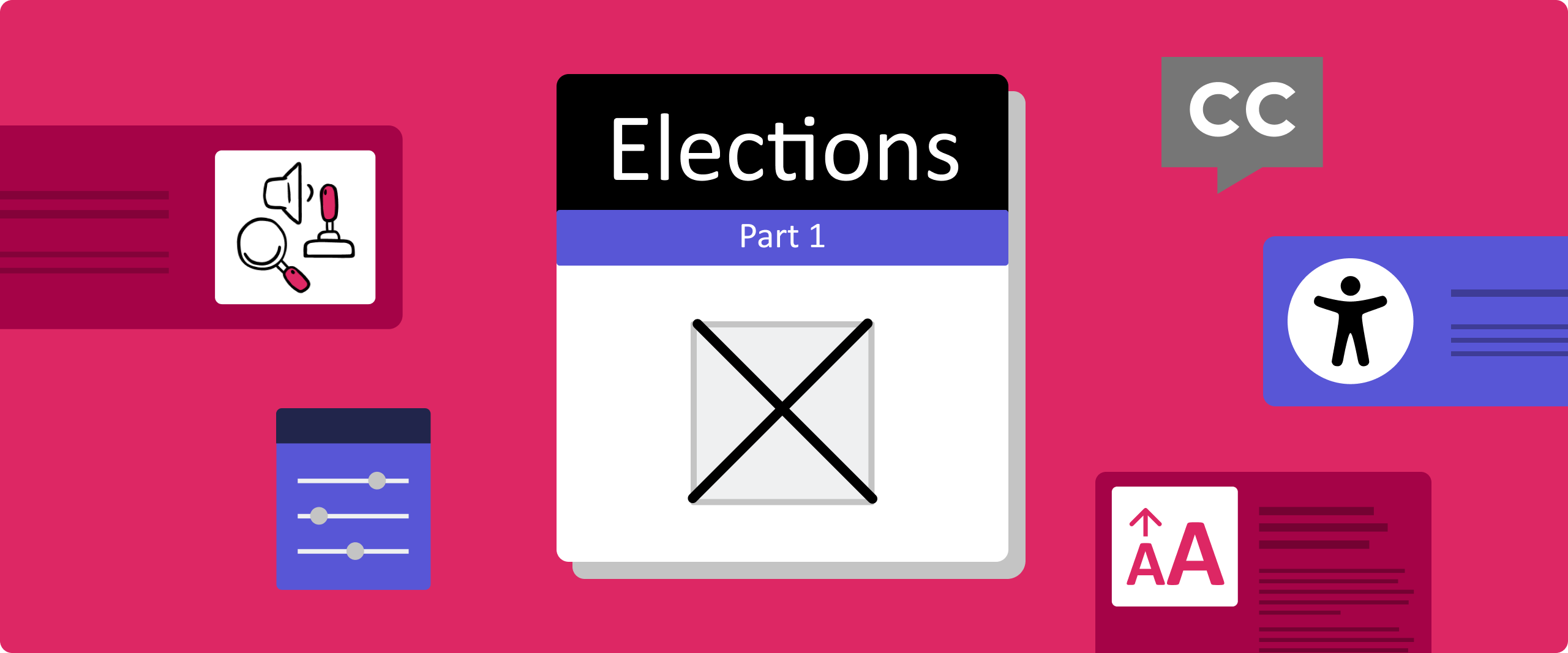
Insights: Election accessibility – Part 1
“Freedom of the press is not just important to democracy, it is democracy.” — Walter Cronkite
This is part one of a two-part series on elections accessibility. In part one, we will cover the ways people with disabilities access election information in the media. In part two, we will examine access to voter information and the voting process itself.
With so many critical elections happening around the world in 2024, we thought it was important to examine how people with disabilities participate in the democratic process. What’s working well, what’s not, and what needs to change? To learn more, we conducted an online survey of our community of people with disabilities, all of whom are native users of assistive technology.
“[Everyone] should realize that by involving and enabling people with disabilities, they are truly practising inclusion in one of the most important aspects of democracy.” — Lewis B
In a world where fake news has become rampant and trust in journalism is at an all-time low, while news budgets continue to decrease across the board, it’s becoming more difficult for citizens to access, judge, and filter the political news we consume. But for those who depend on assistive technology, there are even more challenges. Fable wanted to discover what some of those challenges are, and how our community of assistive technology users are affected by them.
Preferred sources of political news online
Preferred sources of political news
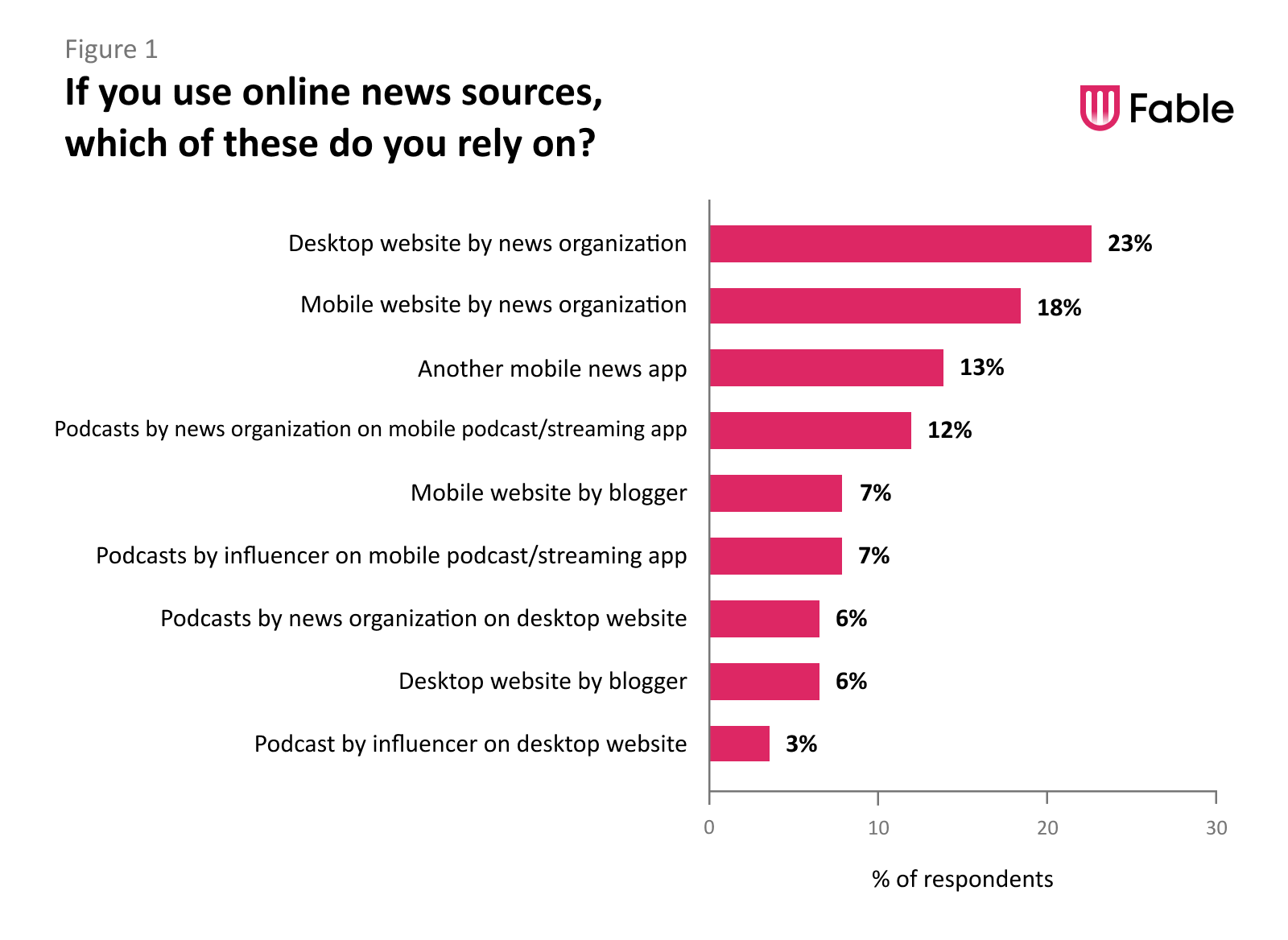
“Printed material is not available in a format I can access. Even with a magnifier the contrast and font are difficult and I end up straining my eyes – it becomes a “not worth it” moment.” — Jaclyn P
When accessing political news, we found that the sources used by our community are diverse. However, consumption of mainstream news organizations remains high. As mainstream news organizations tend to have more resources and larger budgets than individual bloggers and influencers do, and thus more ability to devote time and effort to accessibility, this is unsurprising. When specific websites were mentioned, the most popular were local television and newspaper websites, followed by larger national news sources like NBC, BBC, CNN, NPR, and Fox.
Members of our community who live in smaller towns report more difficulties accessing local political information. Though local municipal elections can often have the largest effect on the day to day lives of those with disabilities, it is often difficult or impossible for them to access information about local candidates and issues. Much of this information is distributed via printed mailings and flyers or is only on social media. Small town elections are rarely covered by large media organizations, who are best placed to ensure that the information they provide is accessible to everyone. This means that those who depend on getting political information via websites or apps can be excluded from local politics entirely.
Functionality and format
“…the most accessible way to consume news as it is a very clearly laid out, navigable experience which generally formats the articles from different outlets in to a mostly consistent user experience.” — TJ O
When choosing where and how to consume news, functionality and formats are a major deciding factor for our community. Fable found that many of our community members prefer to read news on the desktop, rather than on mobile. Desktop experiences offer larger screens for easy reading of long-form articles and have full-sized keyboards making controls easier.
When asked what primary online source they prefer, many of those surveyed mentioned news aggregators like Google News, Yahoo News, and MSN. They all mentioned how accessing multiple stories from different sources in a single interface made news consumption far easier for them. The predictable formatting and layout of news aggregator websites removed the need to learn the interface for every news source, making the news reading process much smoother and less stressful.
Despite the audio-first aspect of podcasts, few members of Fable’s community of people with disabilities rely on podcasts for news consumption. Those who do so show a distinct preference for mobile podcast consumption, similar to the general population of non-disabled listeners. But even in podcasts, which are generally accessed through centralized apps like Apple Podcasts or Spotify (making accessibility of websites and apps less of a concern), listeners with disabilities show a preference for established news organizations.
Political news on social media
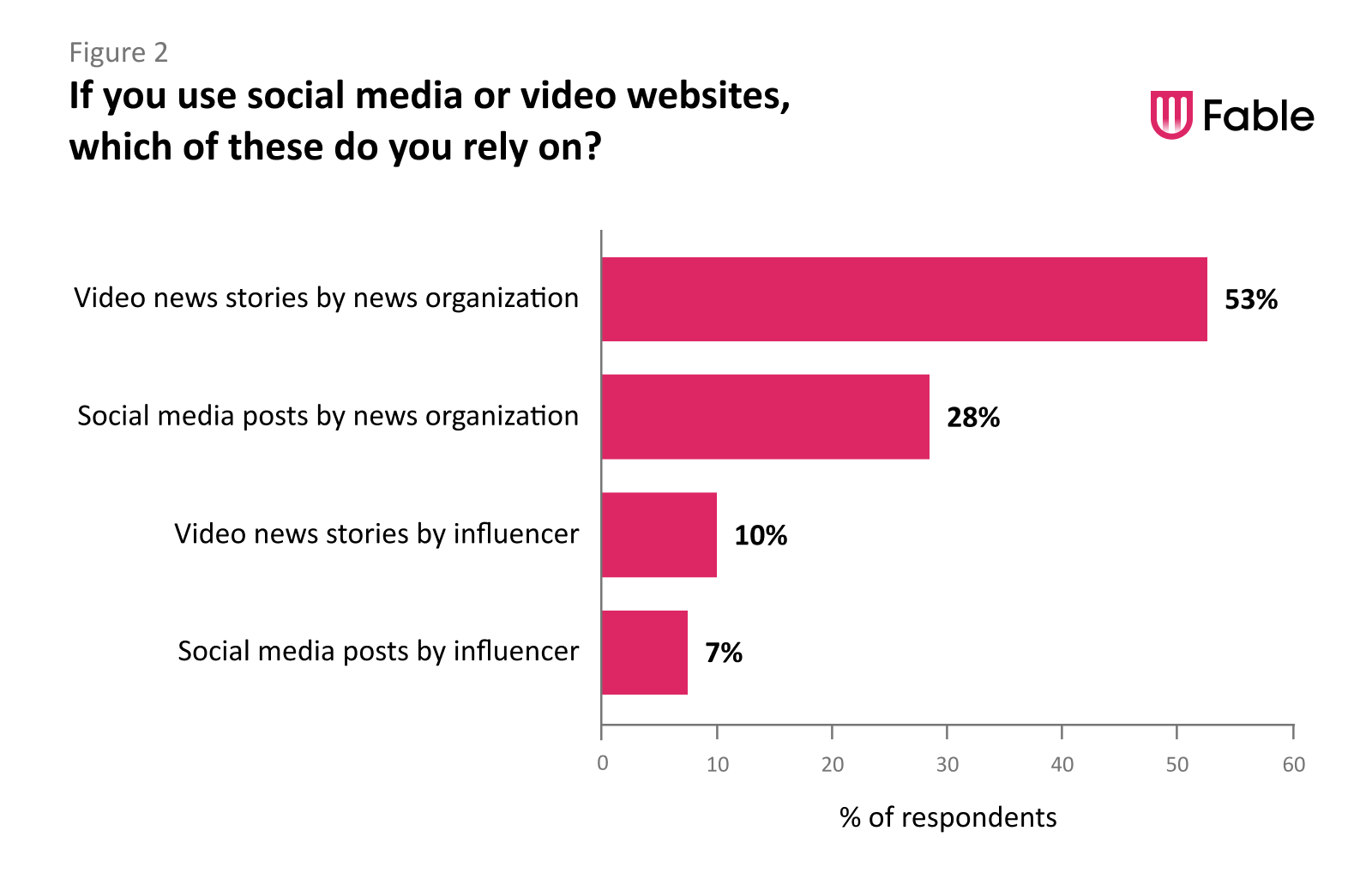
“I was able to easily control the video player. All the buttons on the player were easily accessible using Voice Control on my iOS device.” – Rhonel R
When consuming political news on social media, videos are the most popular option by far. Videos offer both audio and video information, can include accessibility features like captions and audio description, and tend to be posted on large and mostly accessible websites specializing in video. Unlike podcasts, which require word of mouth or searching top charts to discover new shows, discovery is also much easier. Most video websites have complex recommendation algorithms that will recommend popular videos, even from channels and shows the user may not be following. However, it can be difficult to tell what accessibility features a video offers in advance, and when accessibility features aren’t included at all, it can make the entire video unusable.
“There was no closed captioning or transcript available for the videos on the news site which made it difficult to process. The website was also incompatible with my device’s screen magnification.” — Shamila K
Today, ensuring that videos are fully accessible is easier than ever. The price of captions continues to drop, and real time automatic captions continue to increase in accuracy. As most political news footage consists largely of discussion, audio description can be as simple as having the hosts verbalize any on-screen information, or making sure that the information is available in an accessible format as well as displayed on-screen. Improving the accessibility of video news would be a high-impact change that could be easily made by most news organizations, only requiring changes in process and policy, without budgeting for major technical upgrades.
“Very often, you will be listening to a video news source, and the host/guests start talking about things that you cannot access. If it is a video, you can’t see the charts, or the summaries of data they are gushing on about. They likely have the data ahead of the video or podcast, unless it is truly live news, so why not provide the information in accessible formats.” – Kostantino B
Trust and satisfaction
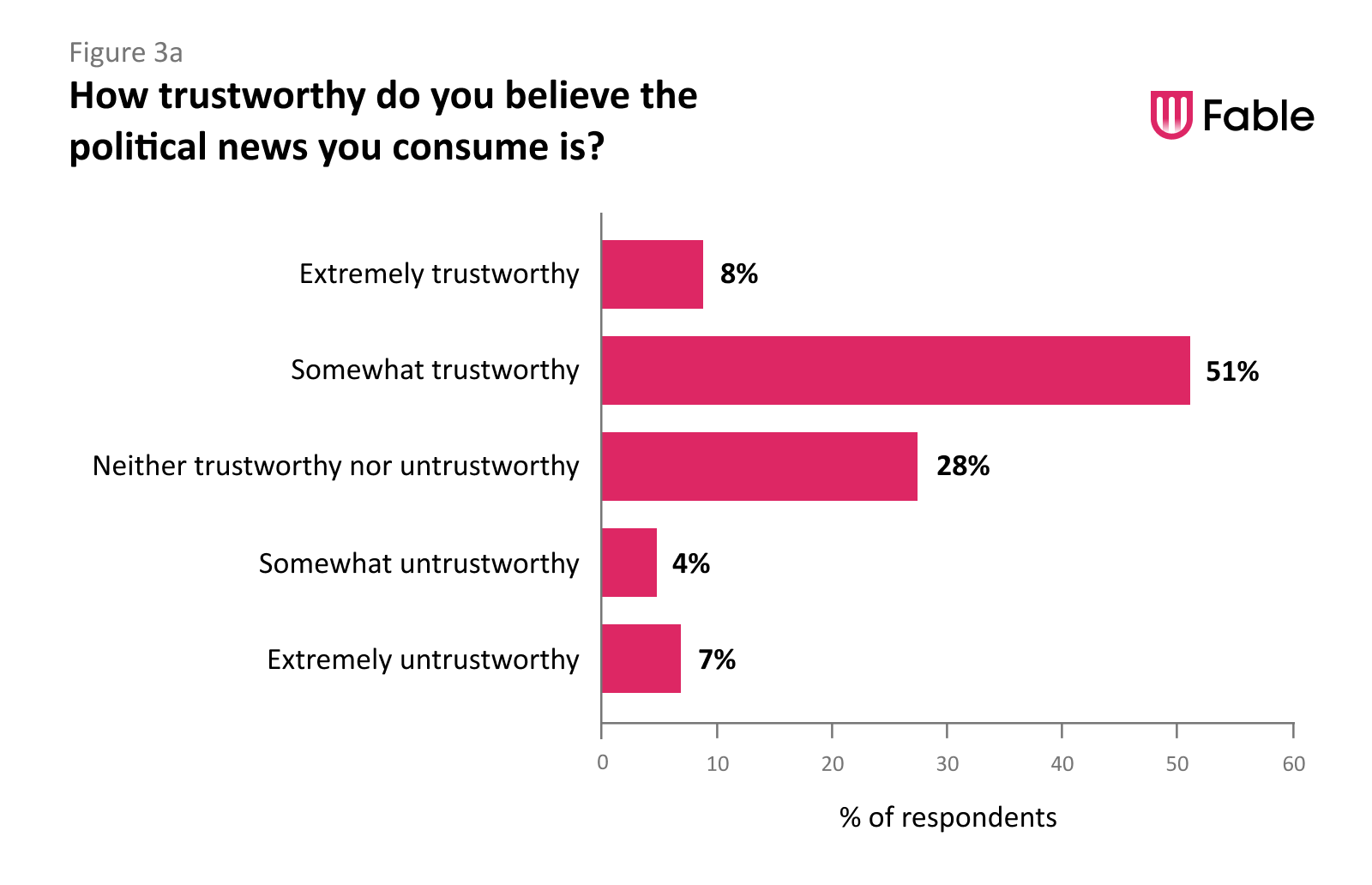
“The mobile app wasn’t the most accessible, but the more I used it, the more I figured how to make it work for me. It was a bit clunky for screen readers, but it’s useful with a little effort.” — Christopher E
While the majority of Fable’s community of assistive technology users finds the political news they consume only somewhat trustworthy, the community did not strongly tie accessibility and trustworthiness together, with 35 percent expressing neutrality towards the statement “The accessibility of a news source affects how trustworthy I find it”.
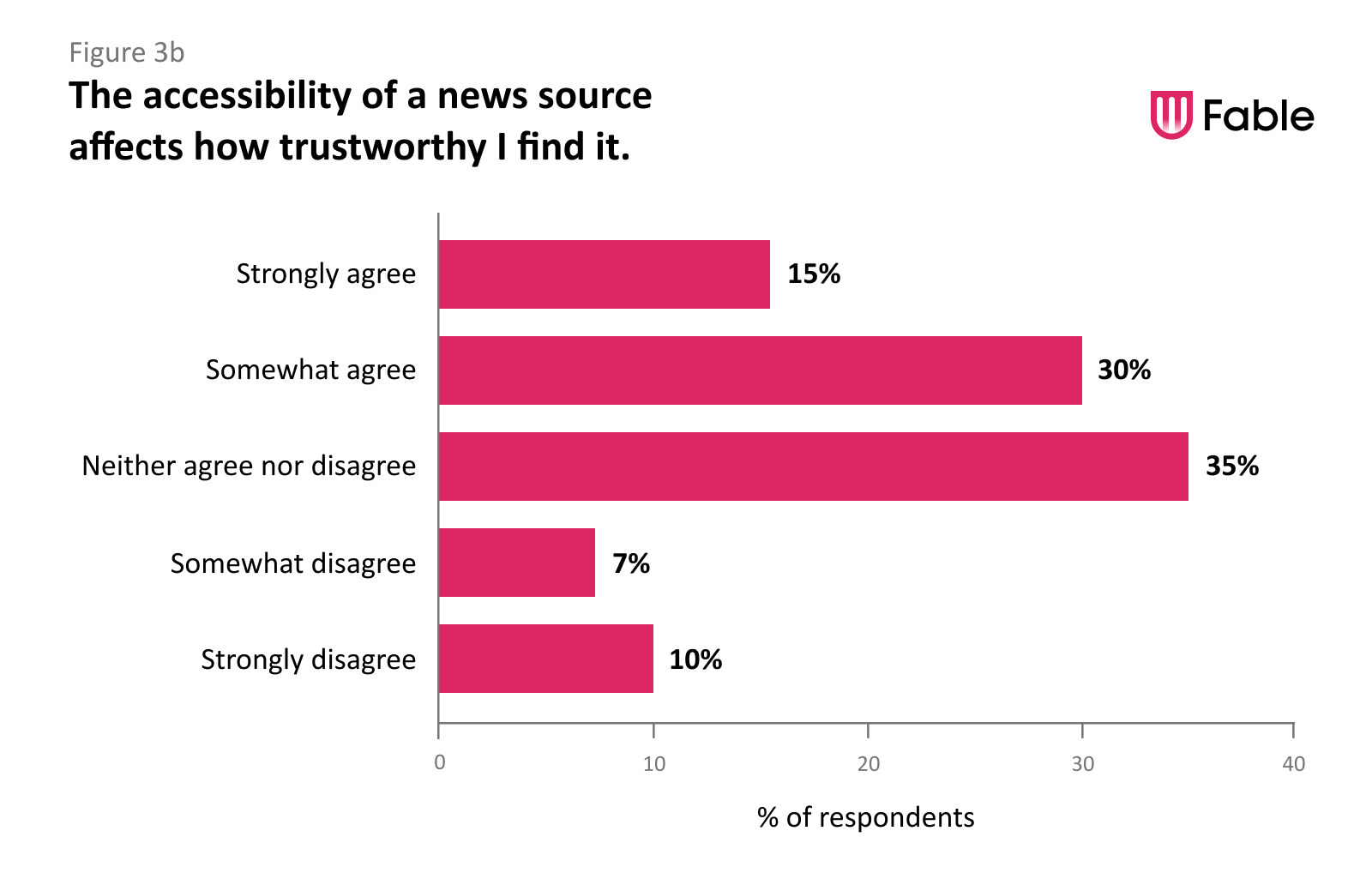
“If I can’t access I just search for another site.” — Michael D
In fact, Fable’s community is mostly satisfied with their ability to access political news. The large diversity of available sources, offering access to audio, video, or text has meant that most members of the community have been able to find news sources that work for them and that they can trust. If a news website isn’t working with their assistive technology, they just go elsewhere, and the inaccessible source loses out on their traffic and readership. Adaptability and customizability are key factors when it comes to accessibility, and for the most part, the current news landscape is doing an acceptable job of meeting those requirements. In the future, as media consolidation continues to accelerate, it will be important to ensure that this variety of formats and platforms is preserved.
The problem of advertising
“On certain news sites, there are popups and adds that make it difficult to read the text with my screen reader because adds will continually interrupt it. Add blockers help with this on desktop. But even with an add blocker on my iPhone, this is still a problem that occurs more commonly.” — Ka L
Another factor repeatedly mentioned by the Fable community, that drives preferences for government and nonprofit news sources online, is the ways that advertising tends to impede accessibility. While many commercial news organizations rely on third-party advertisers as the primary source of funding, these ad providers have a long way to go when it comes to accessibility.
Unfortunately, the problems go deeper than just the advertisements themselves being inaccessible images or videos. Many advertisements cause frequent focus changes that interfere with assistive technology, block the article and can’t be closed with the keyboard, play audio that is difficult to mute, and cause other accessibility problems. This is likely another reason why many people with disabilities prefer consuming news on desktop: they can easily access ad-blockers and other browser extensions like reader mode that will improve the news reading experience for them.
If you’re interested in more information on the experience of online ads for people with disabilities, Fable has previously written an insights article on this topic (The ad accessibility conundrum: community perspectives (makeitfable.com)).
Conclusion
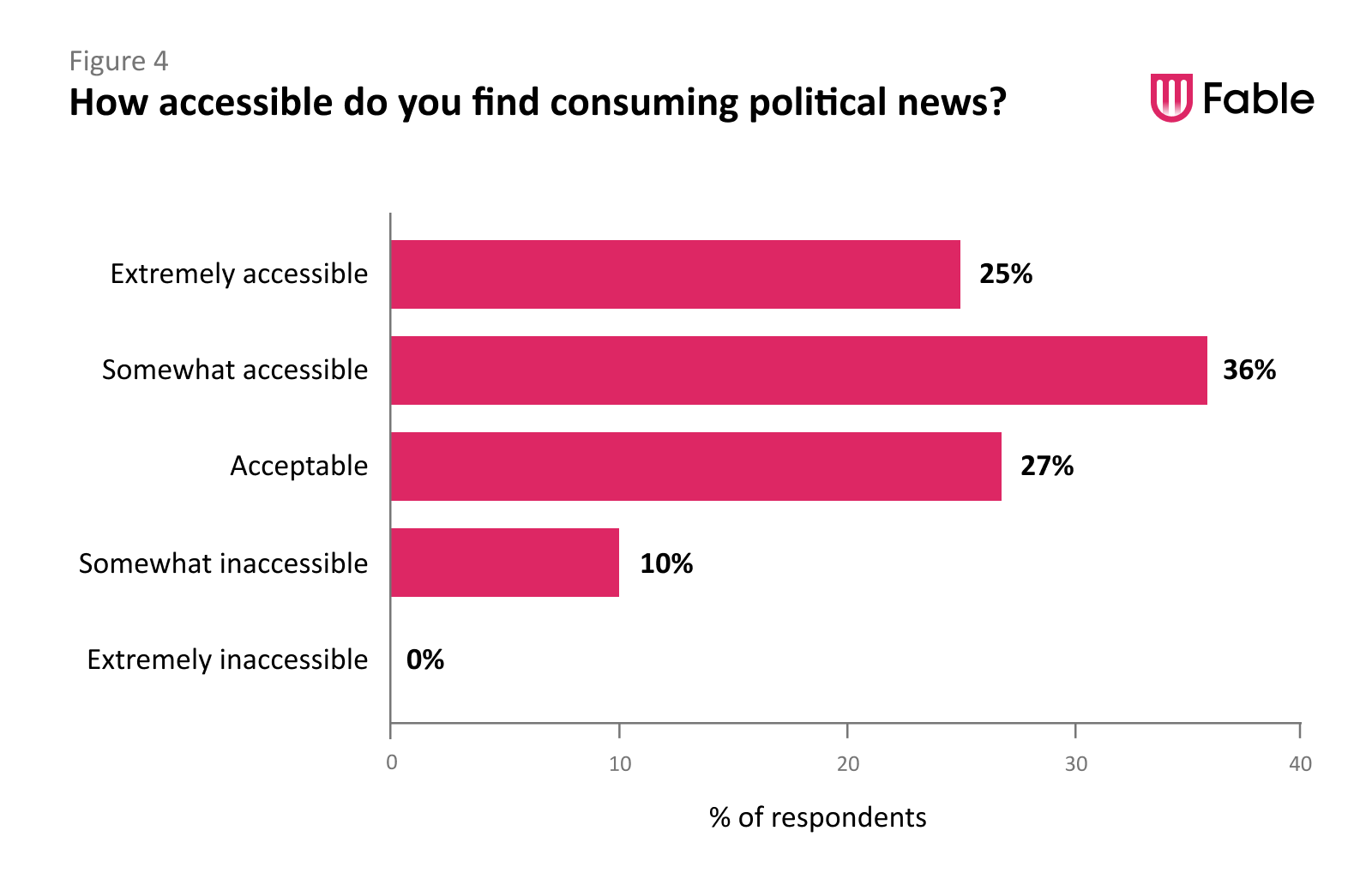
“…my accessibility experience has been good for me. I try to avoid what isn’t working for me. [Some apps] make an effort to make sure their platforms are accessible, so I’m most likely to use their mobile apps and websites for news updates.” — Christopher E
The large variety of news sources, offering news in a plethora of different formats, has made the online news landscape more competitive than ever. While the accessibility of individual news sources is not perfect, Fable’s community of people with disabilities finds consuming political news to be somewhat accessible, with no respondent finding it extremely inaccessible. A key factor of this access is picking the news sources that works best at an individual level and excluding the rest.
When it comes to the process of voting, things are much less rosy. We will dive into the experiences of our community when it comes to registering to vote and heading to the polls in part two of our series, coming shortly.

